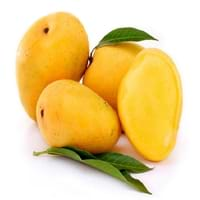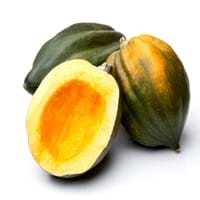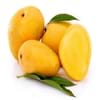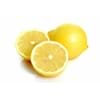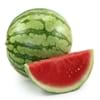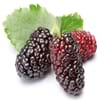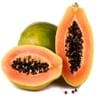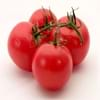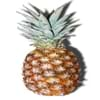Health Benefits
Cancer prevention, Cures fatigue, Heart care, Prevents strokes
Anti-inflammatory properties, Arthritis treatment, Regulates Blood Sugar
General Benefits
Anti oxidant properties, Boosts immune system, Controls blood pressure, Digestive aid, Improves eye vision, Maintains healthy cholesterol level
Boosts immune system, Controls blood sugar levels, Digestive aid
Skin Benefits
Anti-aging benefits, Brightens and lightens complexion, Skin cleansing, Skin rejuvenation, Treatment of acne, Treatment of blackheads, Treatment of dark spots
Nourishes skin, Protects skin from oxidative stress
Hair Benefits
Good conditioner, Prevents hair loss, Treatment of dandruff
Prevents hair loss, Promotes longer and healthier hair, Regulates hair growth
Allergy Symptoms
Abdominal pains, Breathing difficulty, Diarrhea, Runny nose, Sneezing, Swelling of mouth, tongue or lips, Watery eyes
Asthma, Red rash, Swelling of mouth, tongue or lips
Side Effects
Increase in blood sugar level, Diarrhoea, Weight gain
Diarrhoea, Vomiting
Best Time to Eat
Don't consume at night and before bed, Eat the fresh ones, avoid mixing with any other foods, don't eat after meal., Morning time (before lunch)
Along with meal, As a snack in the late afternoon, Don't eat after meal, Eat the fresh ones, avoid mixing with any other foods, don't eat after meal.
Vitamin B5 (Pantothenic Acid)
Vitamin C (Ascorbic Acid)
Vitamin E (Tocopherole)
Not Available
Vitamin K (Phyllochinone)
Not Available
Lutein+Zeaxanthin
Not Available
Calories in Fresh Fruit with Peel
Not Available
Calories in Fresh Fruit without Peel
Not Available
Season
Spring, Summer
Winter
Varieties
Alphonso, Valencia Pride, Badami, Chaunsa, Nam Dok Mai, Glenn, Sindhri, Madame Francique, Kesar and Keitt
Bush Table Queen, Heirloom Table Queen, Festival Hybrid, Early Acorn Hybrid, Table Ace, Ebony and Cream of the Crop
Color
Orange, Red, Yellow
Dark green, Green-yellow, Orange green
Inside Color
Yellow
Yellow
Origin
Southern Asia
Central America, North America, Unknown
Soil Type
Clay, Loam, Sand
Well-drained
Climatic Conditions
Humid, Warm to hot climate
Cold, Sunny
Facts about
- A mango tree can bear fruits even after the age of 300 years.
- Height of a mango tree can be as high as 100 feet.
- In India, mango is known as a symbol of love. Also, a mango basket is considered as the sign of friendship.
- It was named as Acorn Squash for its resemblance to a large ribbed acorn.
- It is said that squash was being grown in Mexico as long as 10,000 years ago.
- It was the first food cultivated by native American Indians.
Other Countries
Bangladesh, Brazil, China, Indonesia, Mexico, Nigeria, Pakistan, Philippines, Thailand
Egypt, India, Iran, Italy, Mexico, Russia, Turkey, Ukraine, United States of America
Top Importer
United States of America
Costa Rica
Top Exporter
Mexico
United States of America
Botanical Name
Mangifera Indica
Cucurbita Pepo
Synonym
Not Available
Winter Squash
Subkingdom
Tracheobionta
Tracheobionta
Division
Magnoliophyta
Magnoliophyta
Class
Magnoliopsida
Magnoliopsida
Subclass
Rosidae
Dillenhidae
Order
Sapindales
Cucurbitales
Family
Anacardiaceae
Cucurbitaceae
Genus
Mangifera
Cucurbita
Generic Group
Cashew
Not Available
Compare Mango and Acorn squash
It is important compare Mango and Acorn squash as both the fruits have a different nutritional value. Their comparison can be done on the basis of their vitamin and mineral content, calories, benefits as well as characteristics, making it easier for us to choose the best fruit for our diet. Their general health benefits are as follows:
Mango Benefits: anti oxidant properties, boosts immune system, controls blood pressure, digestive aid, improves eye vision and maintains healthy cholesterol level.
Acorn squash Benefits: boosts immune system, controls blood sugar levels and digestive aid.
Fruits are also used as a remedy for various hair problems. The hair benefits of Mango are: good conditioner, prevents hair loss and treatment of dandruff and hair benefits of Acorn squash are: prevents hair loss, promotes longer and healthier hair and regulates hair growth. Some fruits are known to cause allergic reactions. The allergy symptoms of first fruit are: abdominal pains, breathing difficulty, diarrhea, runny nose, sneezing, swelling of mouth tongue or lips and watery eyes and the symptoms of second fruit are: asthma, red rash and swelling of mouth, tongue or lips. Get sorted Mango vs Acorn squash comparison with the help of fruit comparison tool by fruitvs.com.
